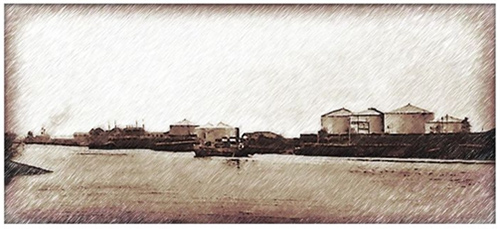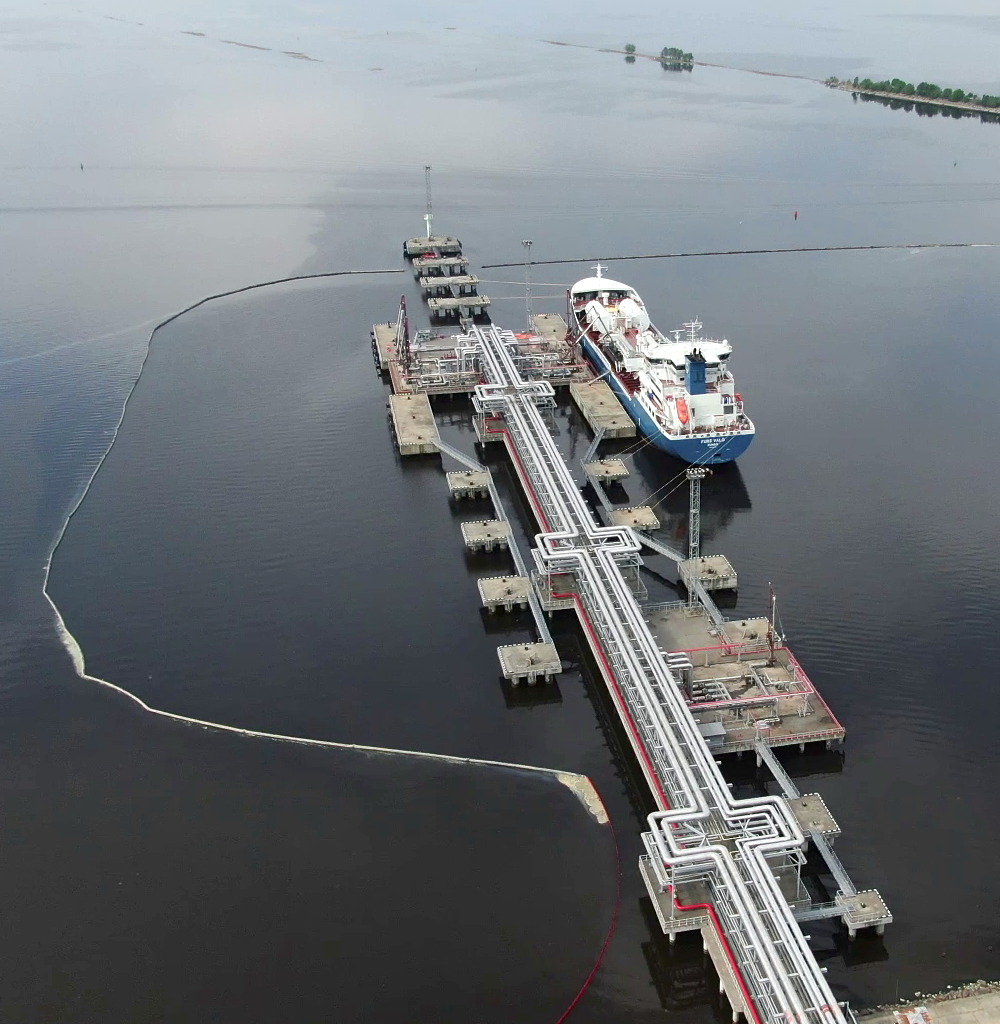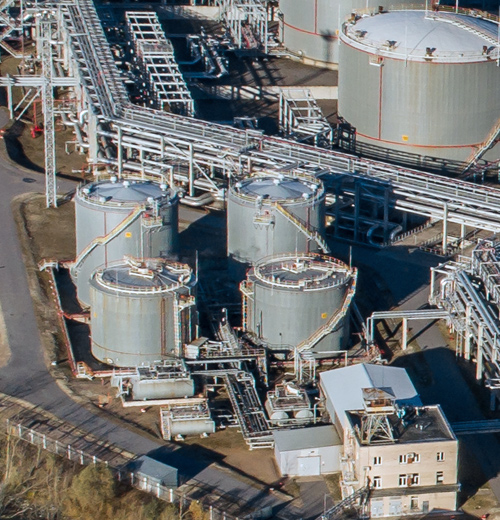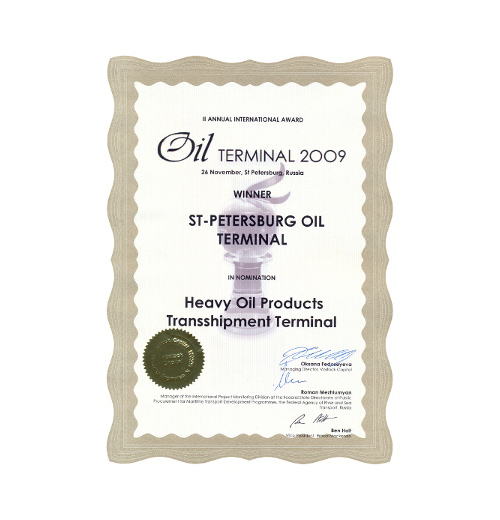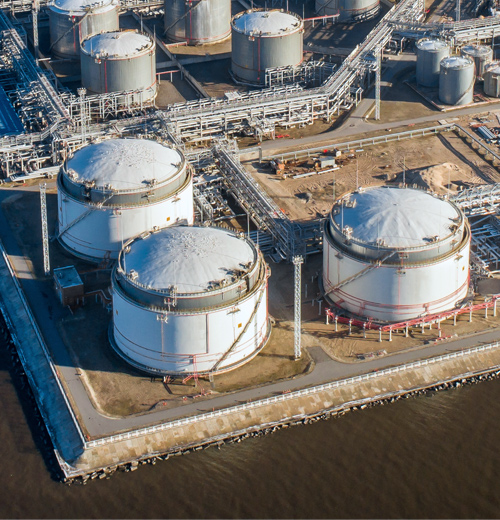History before 1995
History after 1995
The sea port is a contemporary of the city of St.Petersburg
The first port facilities were built on Zayachy (literaly Hare) Island in 1703. Until 1733 the piers were located in the city center, close to Troitskaya Square, and then at Strelka, the easternmost tip of Vasilyevsky Island. In 1885 a new port in the south of the city was put into operation.
Navigation on the Marine Canal started on May 15th 1885.
The new Petersburg Sea Port on Gutuevsky Island was inaugurated on May 15th, 1885, when navigation along the Marine Canal (16 miles/29,6 km long) started. The canal is located in the southern part of the estuaries of the Big Neva River, which means the port can expand almost infinitely towards Strelna. St.Petersburg became accessible for deep-draft vessels. The Marine Canal and its basins converted the Petersburg Port into a junction between the three roads:
- the Baltic Sea Route,
- the Mariinsky River System,
- the main railway lines.
- the Baltic Sea Route,
- the Mariinsky River System,
- the main railway lines.
«An ocean-going steamship, a Volga barque and a steam engine literary stood side by side»
("The Leningrad Sea Gate" by M. Sonkin & I.Maximov)
("The Leningrad Sea Gate" by M. Sonkin & I.Maximov)
In 1887 the rules governing navigation along the Marine Canal were approved
The facilities for oil & oil product storage & shipment at Ugolnaya (Coal) Harbor first got mentioned in the end of the XIX century – the period of rapid development of the Russian Navy.
In 1892 the Russian Commercial Port Atlas said:
«Oil-loading station, oil plant, oil district, transfer complex, oil terminal» – the name has changed several times, but the main business remained the same: bunkering vessels, transshipment and storage of oil products.
In 1892 the Russian Commercial Port Atlas said:
«The Nobel Joint Stock Company supplies oil from their storage facility
- 24 million kilos a year - at the Sea Pier…»
- 24 million kilos a year - at the Sea Pier…»
«Oil-loading station, oil plant, oil district, transfer complex, oil terminal» – the name has changed several times, but the main business remained the same: bunkering vessels, transshipment and storage of oil products.
Between 1950 and 1960s the oil plant was a division of the Baltic Sea Shipping Company.
Then it was transferred to the Leningrad Commercial Sea Port and until 1980s it was part of District IV, which was mostly used for shipping coal.
Until the end of 1980s the main business of the oil plant was bunkering vessels, which mostly belonged to the Baltic Sea Shipping Company. Then the new era came with new goals and tasks.
Until the end of 1980s the main business of the oil plant was bunkering vessels, which mostly belonged to the Baltic Sea Shipping Company. Then the new era came with new goals and tasks.
The Oil Loading District was established on December 13, 1990.
The main business of the Oil Loading District (since 01.01.1994 called Leased Enterprise “Oil Loading Port District”) in addition to bunkering vessels of the Baltic Shipping Company, Fishing and River Ports and North-Western Shipping Company, was supplying bunker fuel to the Russian ships at anchorage abroad.
During the Soviet era oil products were mostly exported from the warm-water ports of the Baltic Republics, which became inaccessible to Russia after the USSR broke up. Redirecting the outbound cargo to the domestic ports became a priority for the Russian government. In mid 90s it launched a number of federal programs, aimed at development of the national port facilities in Russia and paid special attention to the Baltic Region and the coast of the Gulf of Finland.
During the Soviet era oil products were mostly exported from the warm-water ports of the Baltic Republics, which became inaccessible to Russia after the USSR broke up. Redirecting the outbound cargo to the domestic ports became a priority for the Russian government. In mid 90s it launched a number of federal programs, aimed at development of the national port facilities in Russia and paid special attention to the Baltic Region and the coast of the Gulf of Finland.
1995: Beginning of a new era
In June 1995 the Oil Loading District got a new name: the Petersburg Oil Terminal (PNT). The stage-by-stage construction program proved efficient. The terminal never stopped functioning while the new facilities were put into operation. The tank farm grew bigger, and new berths, railcar loading racks and other port infrastructure facilities were constructed.
1998
PNT launched an expansion program which continues up to the present.
2000
A multi-step water treatment facility was put into operation. The facility serves not only the Terminal, but also treats oil-contaminated water from the other companies operating in the Gulf of Finland aquatic area.
2003
PNT took the 2nd place as the company that provides the highest level of environment protection.
2004: PNT got new opportunities
Sea berths PNT-3 and PNT-4 for sea tankers were put into operation and the terminal started receiving vessels of up to 100,000 DWT. Two new railcar loading racks, 36 positions each, were also built.
2005: New record & ISO 9001 certificate
The terminal passed the 10 million tons milestone, having shipped the record amount of oil products – 10,8 million tons. This record became a perfect gift for the 10th anniversary of the company.
The PNT Quality Management System was certified according to the international ISO 9001:2000 standard.
The PNT Quality Management System was certified according to the international ISO 9001:2000 standard.
2006: Automated data exchange
OJSC Russian Railways and CJSC "PNT" started making and exchanging the shipment documents electronically. The so-called ETRAN (Electronic Transport Waybill) System was introduced. The project was successfully completed in 2008, when the electronic data exchange between ETRAN and the automated control system of the Terminal became augmented by the use of the digital signature.
2007: PNT first received super-ships
On January 11, tanker "Glenbulk A", DWT 98,000 tons, 248 meters long, 41,6 meters wide, started loading fuel oil M-100.
On April 17 tanker "МТ Bonita", DWT 108,000 tons, 246,6 meters long, 42,03 meters wide, started loading fuel oil M-100.
Receiving super-ships with large DWT became possible after channel dredging and construction of two new berths.
Two new tanks with a protection wall, 40,000 tons each, were constructed. The two largest tanks in the North-Western Region were built with the ergonomic double-wall technology.
On April 17 tanker "МТ Bonita", DWT 108,000 tons, 246,6 meters long, 42,03 meters wide, started loading fuel oil M-100.
Receiving super-ships with large DWT became possible after channel dredging and construction of two new berths.
Two new tanks with a protection wall, 40,000 tons each, were constructed. The two largest tanks in the North-Western Region were built with the ergonomic double-wall technology.
2008: Well-deserved award
PNT was selected the best stevedoring company among the ASOP (Association of Sea Commercial Ports) members. PNT has maintained this high status during the next two years.
2009: PNT reached the new level of excellence
At the II International Oil Terminal Competition PNT was awarded as the "Best Terminal for Dark Oil Products".
PNT reached the new level of technical excellence, having trans-shipped 12 million tons of oil products in a year.
Reconstruction of the boiler house and heat transfer units allowed PNT to switch from thermal oil to steam warm-up process when unloading dark oil products.
PNT reached the new level of technical excellence, having trans-shipped 12 million tons of oil products in a year.
Reconstruction of the boiler house and heat transfer units allowed PNT to switch from thermal oil to steam warm-up process when unloading dark oil products.
2011: 3<sup>rd</sup> 40,000 ton tank
The Terminal started construction of the 3rd 40,000 ton tank, as the next stage of the long-term investment program, designed to last until 2020.
2012
Construction of the 3rd 40,000 ton tank was over.
2013: Renovation of the old facilities
In 2013 the Terminal planned to install a modern pumping module for pumping fuel oil out of the discharge racks.
2017: PNT started shipping kerosene for export
Tanker Sten Idun with DWT 16,600 tons left berth PNT-3, loaded with aviation kerosene TS-1, produced at the Kirishi Oil Refinery.
The tanker was carrying 15,000 tons. The Terminal shipped such a type of fuel for the first time in its history. The main recipients were companies in the North-Western Europe.
The tanker was carrying 15,000 tons. The Terminal shipped such a type of fuel for the first time in its history. The main recipients were companies in the North-Western Europe.
2018, July: Shipping by truck
The Terminal started shipping fuel oil to the domestic market by truck.

